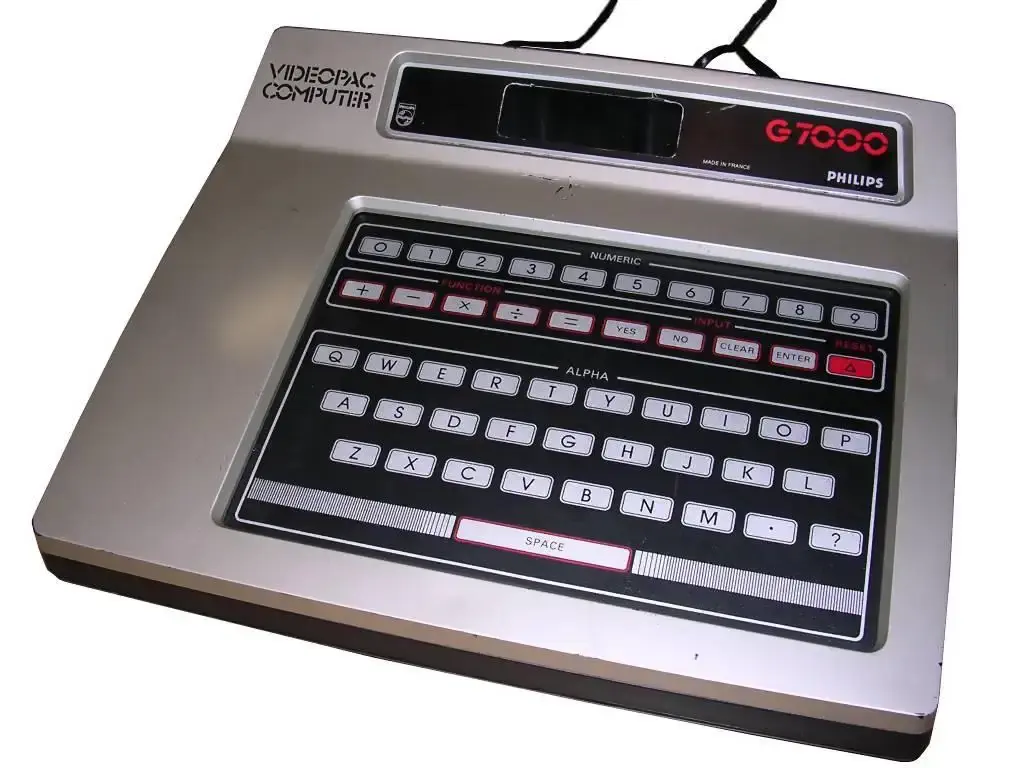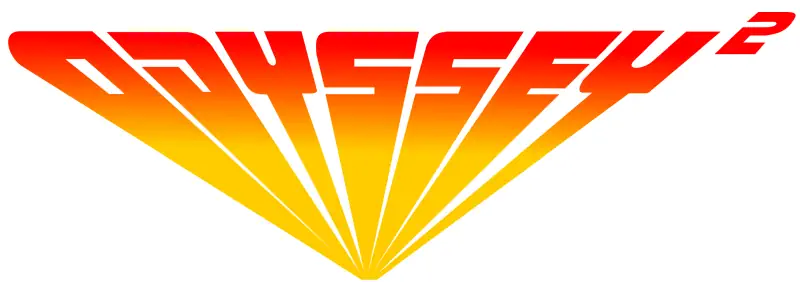
Philips G7000 = Magnavox Odyssey 2
Even though it looks like a computer, the Philips G7000 is a game console. It was released in 1978 by the Dutch company Philips and featured a console with game cartridges and joysticks. Some of the games were educational in nature and required the keyboard for input. Since the brand-name Philips was not very popular in the USA, this same machine was released as the Magnavox Odyssey 2. In France it was released as Radiola Jet 25, but underneath they were all the exact same machine.
The console runs on the Intel 8048 microcontroller that has specific software in the chip's mask-ROM. The CPU is swappable for the Intel 8748 if the same code is used. An Intel 8245 circuit is responsible for the video output. The System has 64 bytes of memory for the CPU, allowing it to run simple games. With the amount of memory.
Magnavox later introduced a cartridge called "Computer Intro!" which allowed the user to practice some simple computer programming.
The Odyssey 2/G7000 used a standard 8-direction joystick with a single action button. Interestingly enough some machines were manufactured allowing the joysticks to be unplugged from the back of the unit using a DB9 connector, while others were hardwired to the unit itself, based on where the unit was manufactured.
Capabilities of the Odyssey 2 were not up to par of those of the Atari 2600 and the Mattel's Intellivision. Both of these machines had better color palettes and graphic capabilities.
Philips G7000
The European version of the Odyssey 2 was called the Philips G7000 and had black action buttons on the joystick, instead of the red ones for the Magnavox Odyssey 2
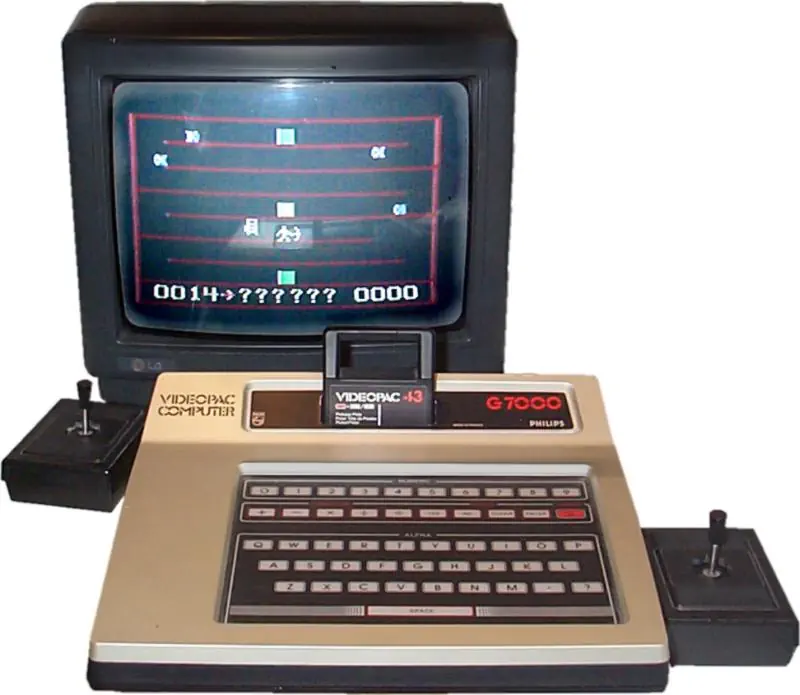
The console had 64 pre-defined characters in ROM. 12 of these characters were meant as fore-ground characters and consisted of play elements like ships, ball, a man, and a plane. The other characters were used for the play-field of the games.
The keyboard was a membrane keyboard and not great to type on. The console definitely was not meant to be used as a computer to program on, but some educational games required user input. There was however the C7420 cartridge that contained a variant of the BASIC language and allowed one to save programs to a cassette tape that could be attached.
Most games that came out for the machine were not licenced ports, but more like variations of the original game. For instance there was a pacman-like game in which the ghost-house was moving, making the game somewhat more unpredictable and difficult.
Motherboard
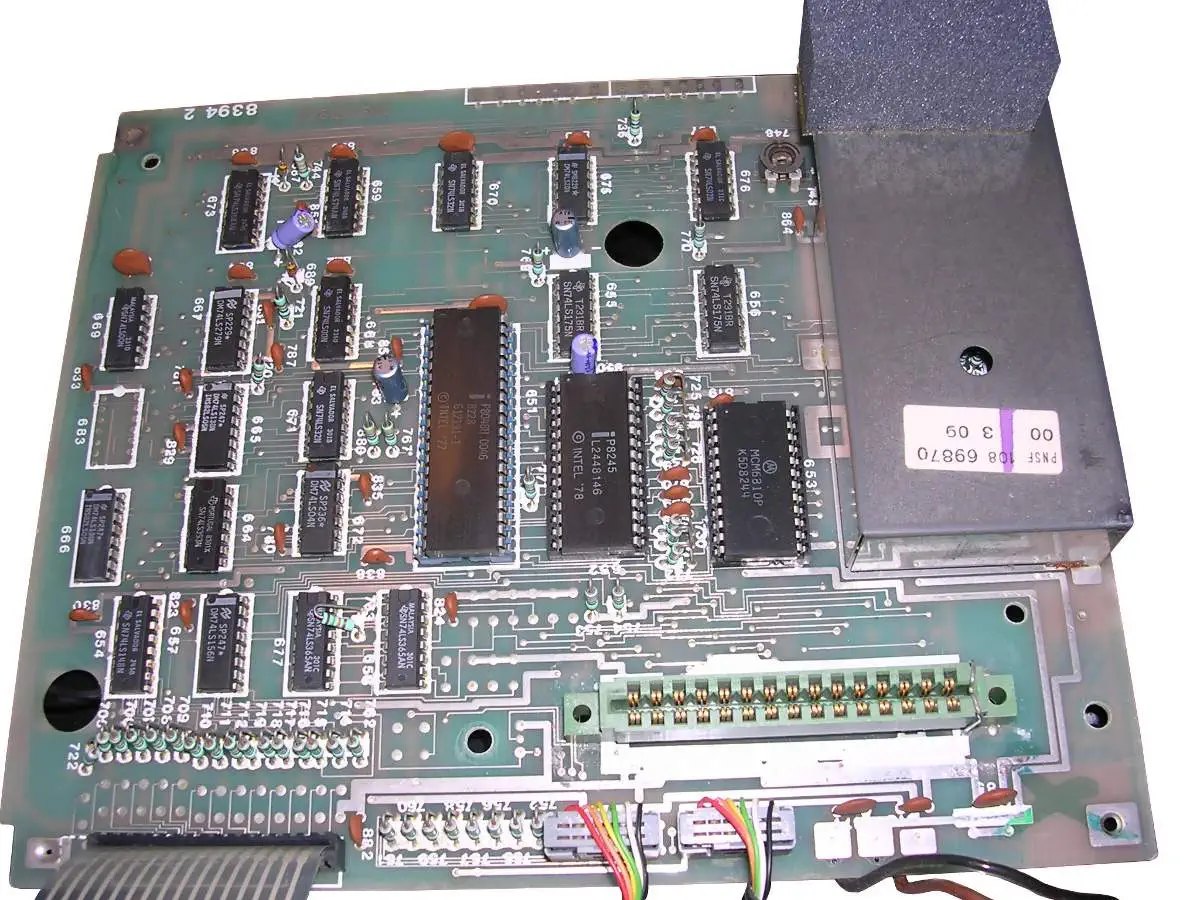
Joystick Internal
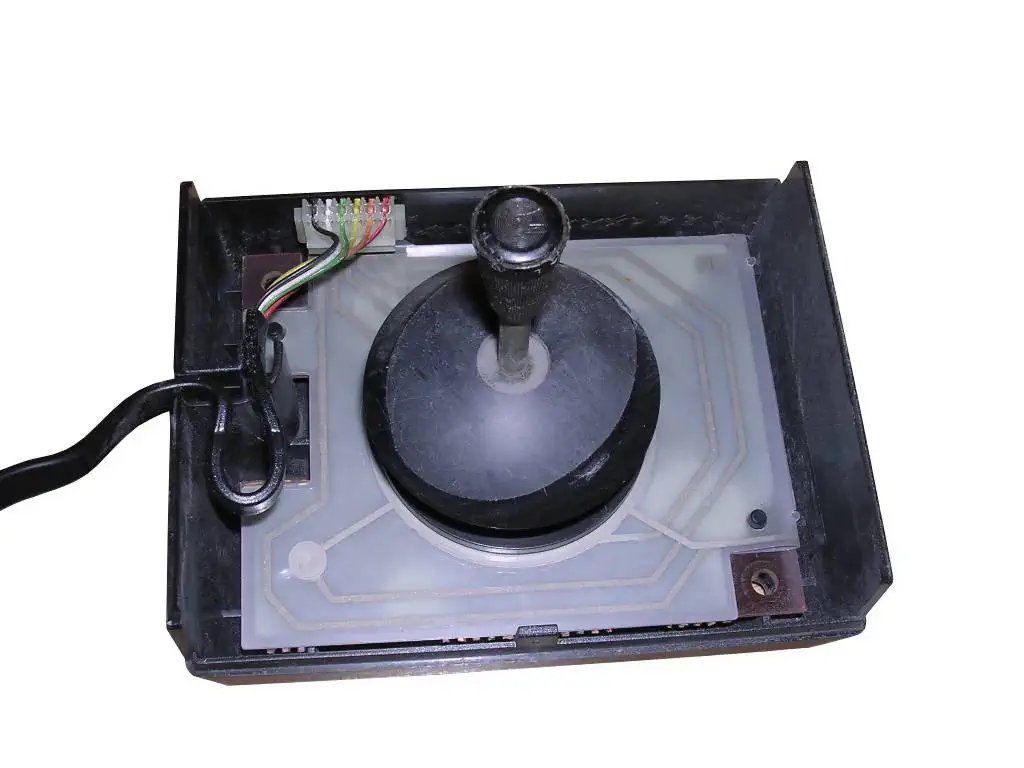
CPU Close-up
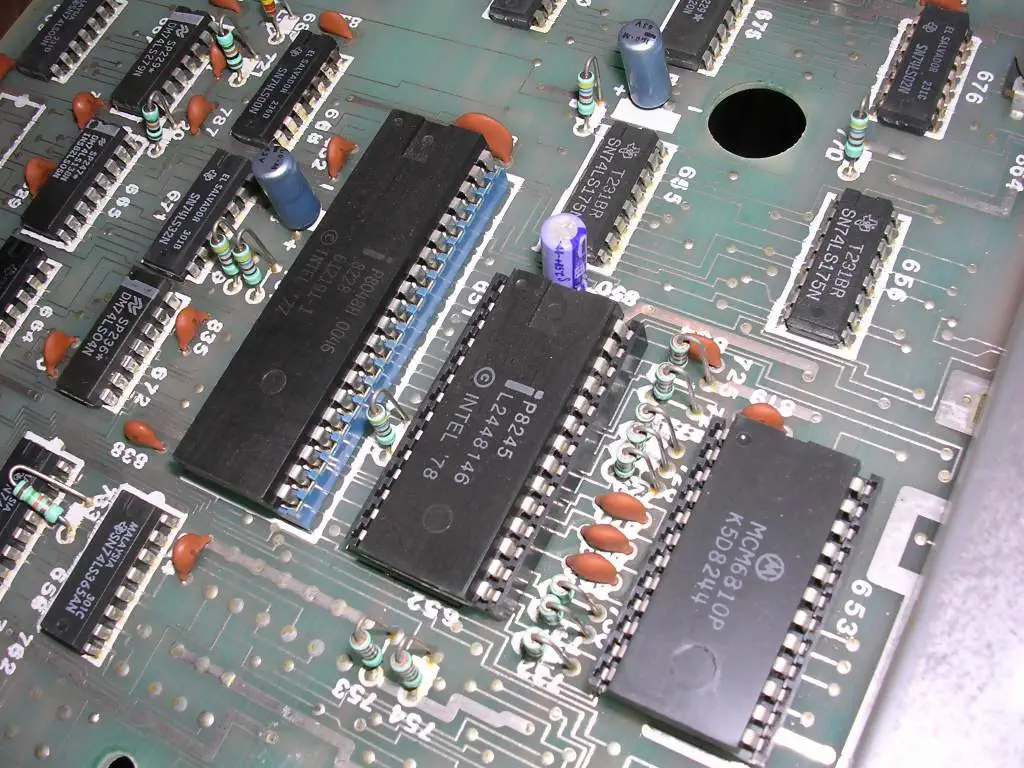
List of games
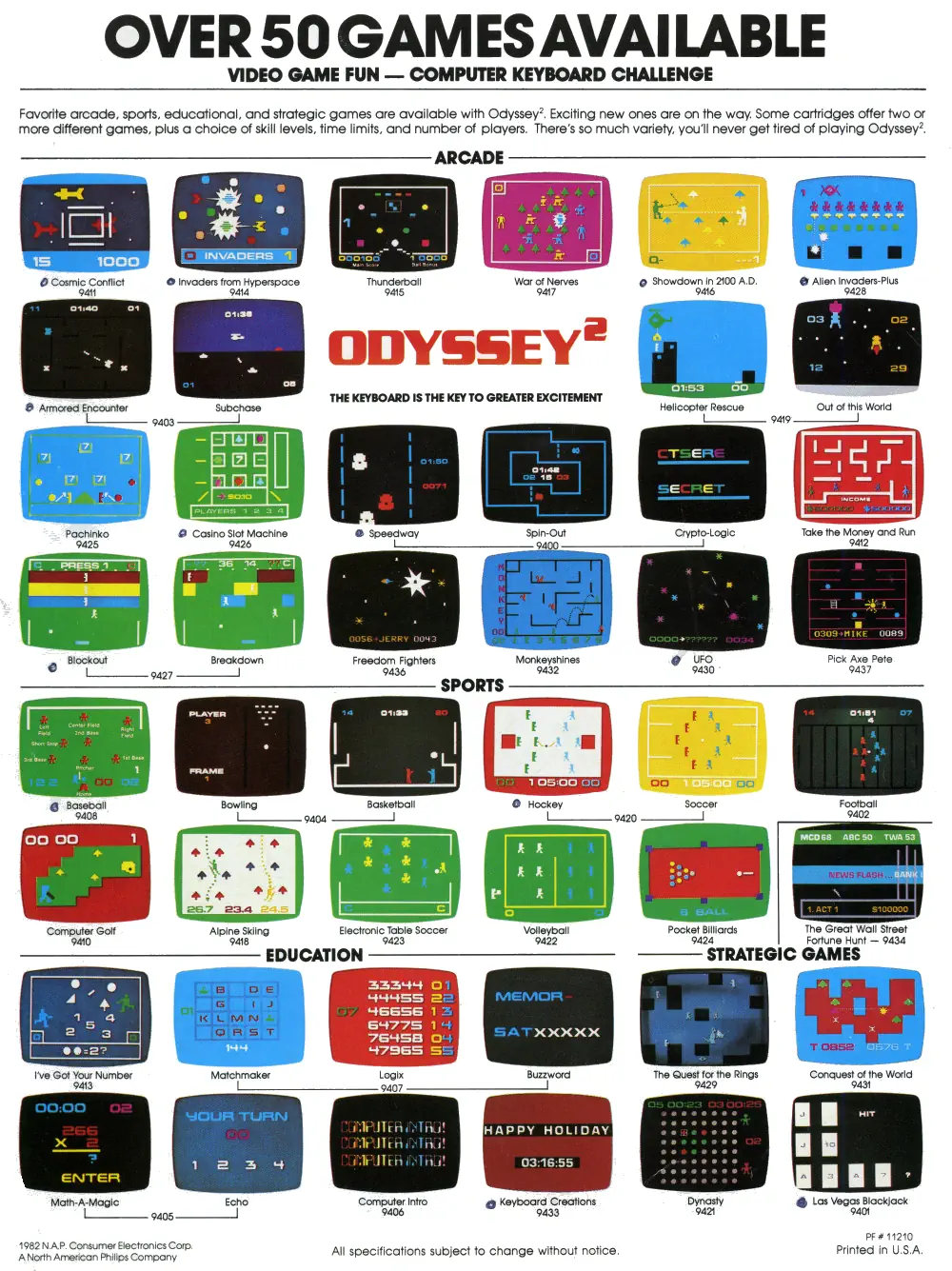
C7010 Chess Module
This is the Philips C7010 Chess module for the VideoPac game system. This was basically a chess computer that could be linked to the VideoPac through the cartridge module. The C7010 had its own NSC800 CMOS Microprocessor. This microprocessor is Z80-compatible and was able to run the chess program. The chess program is based on the Gambiet 80 program written by Wim Rens for Microtrend.
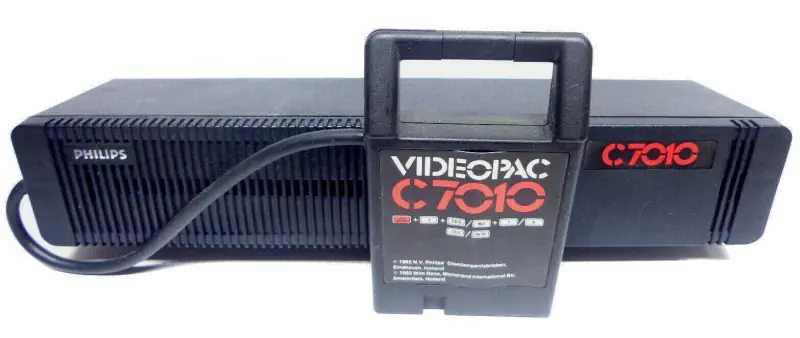
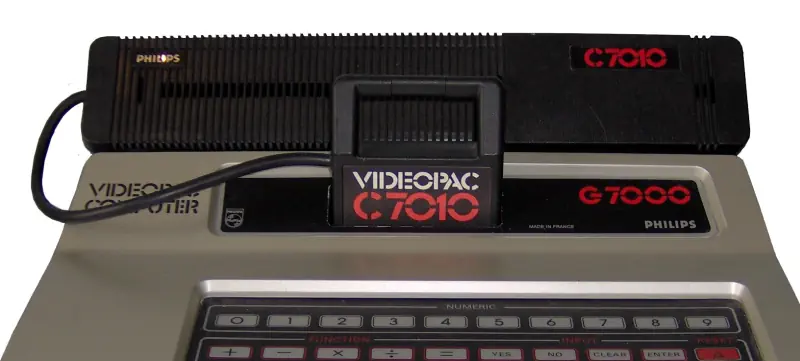
The Intel 8048 Microcontroller
The intel 8048 microcontroller, part of the MCS-48 series of microcontrollers, was released in 1976. The chip was first designed on NMOS (N-type metal-oxide semiconductor) technology, but later in the early 80s it was available in CMOS technology as well. The chip was manufactured up to the 1990s as many older designs still used the controller.
The MCS-48 series consists of the Intel 8048, the 8035 and the 8748 microcontrollers. They are based on a modified version of the Hrvard architecture. This architecture allows memory that contains instructions to be accessed as data. Most modern computers use the modified Harvard architecture. The original Harvard architecture had separate memory to store instructions and data. The modified architecture basically combines the memory into one single memory type, but data and instructions have a separate memory address space instead of a separate storage location.
The MCS-48 series had 64 to 256 bytes of internal on-chip RAM. The I/O is mapped into its own address space, separate from the instruction and data address spaces. The instructions were typically on an internal or external program ROM. The microcontroller had a very efficient one-byte instruction set and mature development tools. The chip was very cost-effective and its successor the MCS-51 series of microcontrollers have been used up into the 2000's in computer keyboards, toys and remote controllers.
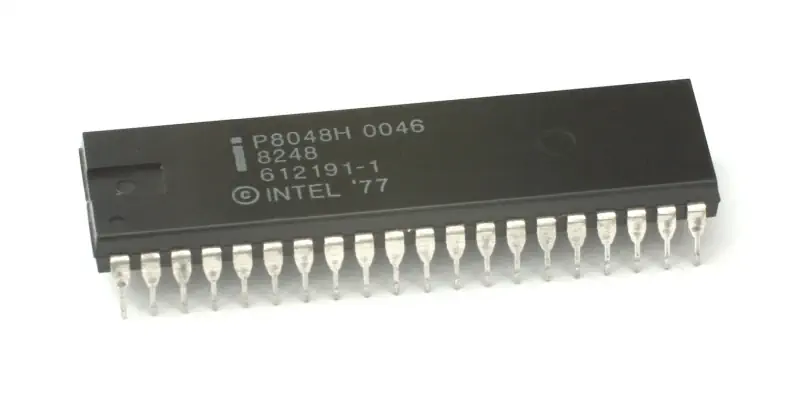
VRAM: 128B
64B CPU RAM Sound Chip none Sound 1 channel 8 octaves Display Chip Intel 8244 (PAL)/8245(NTSC) Display 160x200 in 16 colors Best Color 16 colors Best Graphics 160x200 in 16 colors Sprites 12 ROM based characters as players

